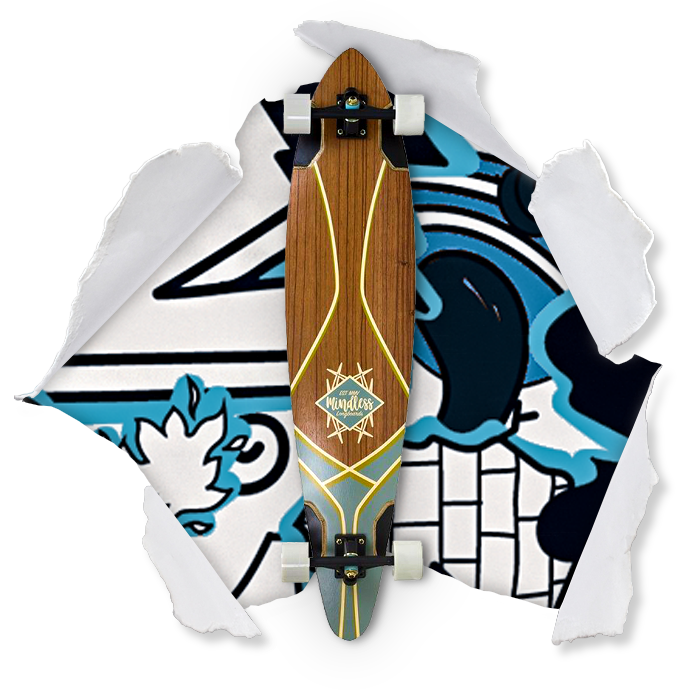The Basic Differences Between Complete Longboards, Shortboards And Cruisers

When you think of skateboarding you may have one traditional idea in your mind – that of a wooden plank atop a set of four wheels and someone balancing with varying degrees of success on top. This is correct to some extent, but nowadays there are many different ways of boarding along roads and streets, through parks and down hills, and the boards you can buy are quite different. Skateboarding invokes quite a nostalgic image of a pastime people used to enjoy before video games and social media, yet it has come back in a huge way since we have become increasingly aware of the global climate crisis and a need to find more sustainable ways to travel. Now there are three quite different ways to fly around the streets atop a board, rather than only the traditional skateboard.
So what’s the difference between shortboards, longboards and cruisers?


An overview
The main difference between shortboards, longboards and cruisers is what they are used for and it’s important to bear this in mind when considering all their other differences.

Longboards are used for relaxed riding or going bigger distances. So someone commuting to work on their skateboard, for instance, may have a longboard if they have chosen the most effective form of transport.

Shortboards, or skateboards, tend to be used for technical tricks. If you see people in a skate park with ramps and obstacles, they will probably be using a skateboard/shortboard.

Cruisers are different again. They are easy to carry around and often used for short journeys. Someone might use it for a quick five-minute skate to the train station then pick it up and carry it with them for the rest of their journey.

Shortboards


Size: Widths tend to vary from 7" to 9" and the length from 28" to 32".
Shortboards are almost exclusively meant for people wanting to perform tricks and technical skating. You wouldn’t usually travel far on a shortboard. Street skaters tend to prefer narrower decks while vert and bowl skaters will usually opt for wider ones. The shape of the board is quite different to other boards too, with the nose and tail of the board curving upwards to assist with jumping and flipping.

Longboards
Longboards are the longest of the three boards, although they can come in different sizes.



The longboard is usually used for either very long distances or more extreme activities, such as downhill racing.
Interestingly, longboarding comes as close to on-land surfing as you can get, so it tends to be a popular pastime among surfers.
Some complete longboards are designed specifically for carving (going in and out of corners and dips), some for long distance travel and others for going downhill. They are the most expensive of the three but usually the most long-lasting, so it’s worth it.

Cruisers


Size: Usually between 25" and 34" in length, although it can vary.
Cruisers are used by many people as part of their commute. The boards tend to be flat but with a kicktail at the back to allow the user to jump on and off curbs quickly. Cruisers will always come with larger and softer wheels that traditional skateboards for tricks. These wheels enable the rider to go faster and offer a much smoother ride plus better grip. One aspect of the cruiser to note is that they’re not really designed for going downhill, at speed you will get wheel wobble and that can be dangerous.

Deciding On Your Board
The only way to make a decision on which board you want to buy is to first decide what you want out of the board.
Think about what you want to use the board for, the area where you live, what the roads are like and the functions you need your board to perform.
If you genuinely think you might want your board to perform several functions – tricks and long distances, for instance – consider whether you might need to buy two different ones.






